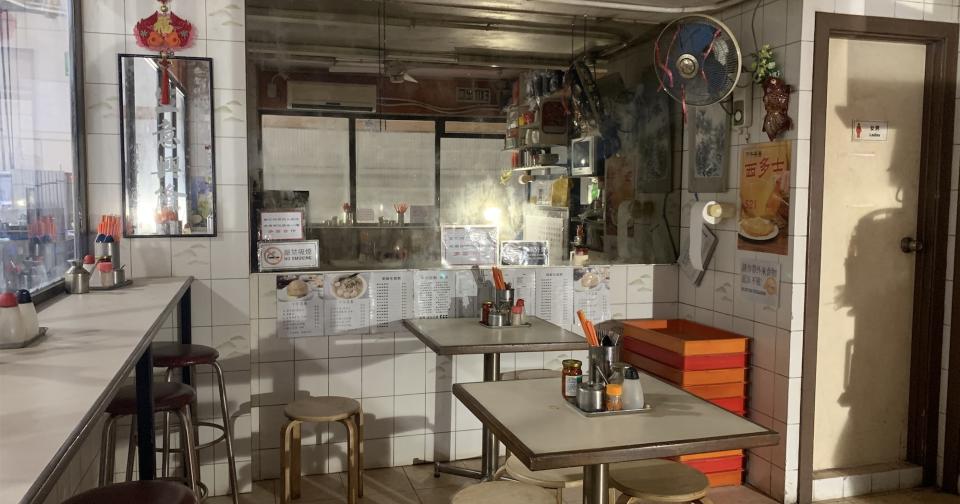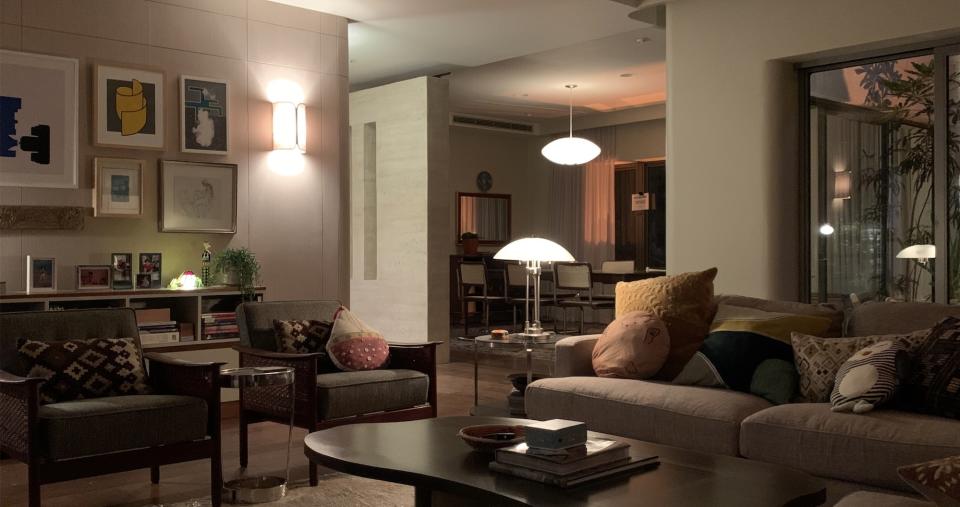‘Expats’ Recreated a Long-Gone Hong Kong — Twice

Part of what makes “Expats” so potent is that it focuses on three women in Hong Kong grappling with momentous life changes in 2014 when the city was doing the same. But the Hong Kong of today — even the Hong Kong of 2020, when the Prime Video series began shooting — is markedly different from the Hong Kong of 2014 when the story is set.
Episode 5, “Central,” explicitly digs into the scale of these changes, as instead of following the show’s main expats, it focuses on local characters of all economic strata caught up in a particularly bad storm at the beginning of the Umbrella Movement protests, from a young activist on the frontlines (Will Orr) to his worried-sick mother (Maggie Lee) to a migrant worker (Amelyn Pardenilla) with big dreams. While the pandemic shifted some of the show’s production from Hong Kong to L.A., production designer Yong Ok Lee knew from the start that she was walking into the challenge of recreating a city that doesn’t exist anymore — at least, not in the way it did during the Umbrella Movement.
For each location that “Expats” chose, Lee had to research what it looked like seven to eight years prior and create interiors that would support VFX additions of long-gone signature signage. She focused on details that a casual viewer might not notice, but that would read as authentic, even when the production had to adjust for what’s changed in the interim.
More from IndieWire
For instance, for the choir practice and picnic that begins Episode 5, Lee and her team needed to organize and dress three blocks’ worth of domestic workers enjoying their one day off, but for a pre-pandemic look where no one would be wearing masks. “That was huge, and it was a difficult shoot for the production, art, and set teams, really for every department,” Lee told IndieWire.
Some of it was solved through strategic spacing, but some of it was solved, ironically, with umbrellas — Lee acquired over 500 umbrellas for the protest sequences and encampments and used umbrellas to cover some of the picnic women relaxing on Sunday — and a willingness to shoot through a bit of rain. “We chose every single color for which block we were going with,” Lee said. “And I had almost 100 people with me [to make happen.] And our call time was 2 a.m. because we couldn’t start setting up before [the day of shooting].”
But every Hong Kong location required a big overhaul of one kind or another. For interiors, Lee reworked even the simplest of spaces so that the production team could create an adjustable exterior view of 2014 and an interior that spoke to where the characters were in the moment. For Mercy’s (Ji-young Yoo) apartment, Lee found a location but then rebuilt it anyway. “Mercy, I feel like she’s lost,” Lee said. “She’s young and she’s just trying to figure out where she belongs. So I wanted her place to feel unkempt but also feel like she has a sense of humor and fun. I wanted to mix those feelings and put a very funky color on her kitchen, but broke a lot of the kitchen and bathroom tiles.”
There’s a sense of interior chaos to Lee’s designs for Mercy’s space that reflects a messy character and the caprice of Hong Kong landlords. “[I scouted] places where the landlord bought one big place and then divided it into units. So, sometimes windows would be half in one unit and then a wall gets put right in the middle. I wanted to show those funny layouts,” Lee said.

The characters who live in luxury apartments don’t escape Lee’s eye for how layout and interior reveal things about the characters that they would never say themselves. Lee gave Margaret (Nicole Kidman) and Hilary (Sarayu Blue) similar layouts — they live in the same building, after all — but infused Margaret’s with more mid-century, East Coast touches and put more of a West Coast vibe into Hilary’s. Lee uses Margaret’s space to show her pushback against her housewife status and her background as a landscape architect.
Because Hilary is, understandably, hyper-aware of her image and skin tone, Lee decided that she would repainted her apartment to match. “It’s kind of a peachy tone, so I painted every different tone of peach that was kind of similar to her skin tone, and then we did all the camera tests with costume and makeup, and [that was how] we chose a color,” Lee said. “So we painted the entire place with that color, and then I made it a little bit more Californian. It’s not classy, but it’s more elegant and feminine and maybe a little bit cheap, but also very sexy.”

Getting those character details just right — and on a TV schedule — required a strong cross-department collaboration (helped by the fact that many were longtime collaborators of director Lulu Wang) and the determination to treat “every single episode like its own movie,” Lee said. This went doubly true for the elements created in Los Angeles, like the Noodle Shop in Episode 1 where Hilary and Margaret chat. Lee and her fellow department heads really needed to become custodians of the Hong Kong they were trying to create. “When we crewed up in L.A., we were like, ‘Oh we are shooting until February.’ And then it became shooting until the end of May. I [had to change] the art department three times because they couldn’t stay longer,” Lee said.
But even handing off the baton from Hong Kong to Los Angeles and different members of the production team at different times, Lee honed in on character details that make something feel authentic to her — while Hilary, Margaret, and Mercy all have different levels of clutter in their apartments, Lee appreciates the fact that only Mercy’s is crammed with essentials. Each reflects the choices that only happen when a series’ production team is talking about characters from the start.
“While we were working in Hong Kong, we went out a lot and explored all the locations and streets and checked every location together,” Lee said. “There were lots of discussions between us, not only about place or art or concept. We talked about the actors and the characters and costume and lots of different things. So it was a really great process to work closely with them, because they made me push myself so hard.”
Best of IndieWire
Where to Watch This Week's New Movies, Including 'Argylle' and 'How to Have Sex'
Christopher Nolan's Favorite Movies: 40 Films the Director Wants You to See
Sign up for Indiewire's Newsletter. For the latest news, follow us on Facebook, Twitter, and Instagram.

